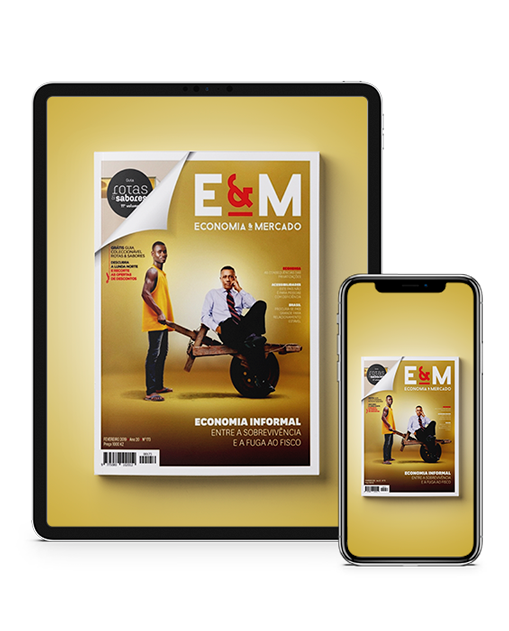Os investimentos devem canalizados nas infra-estruturas físicas, no capital humano, nas reformas e amadurecimento das instituições e na valorização dos recursos naturais. Esse desiderato tem sido facilitado em condições em que os níveis de rendimentos elevados e a cultura de poupança nas economias sejam compagináveis com as necessidades de investimento.
Quando existe desencontro entre as necessidades de investimentos e as capacidades de poupança do país, como o que ocorreu com a economia angolana, nos últimos cinco anos (2016 – 2022), em que se assistiu a uma contracção da economia, os países tendem a incrementar a sua estratégia de mobilização de investimento estrangeiro de modo a compensar os desequilíbrios internos.
De acordo com dados registados pela Agência de Investimento Privado e Promoção das Exportações (AIPEX), as intenções de Investimento Directo Estrangeiro (IDE) situaram-se em 3 007 milhões de dólares, o que representa 52,41% do total das intenções de investimentos apuradas, entre Agosto de 2018 e Fevereiro de 2022, sendo que o remanescente equivale ao Investimento Directo Interno (1 776 milhões de dólares) e Intenções de Investimento Misto (954 milhões de dólares), uma participação de 30,96% e 16,63%, respectivamente.
Relativamente à origem dos investimentos realizados, o destaque recai para o facto de, além dos 30,95% de intenções de investimento demostrados por investidores nacionais, a África do Sul ter uma participação de 11,82% das intenções realizadas, posicionando-se como a segunda maior fonte de intenções de IDE, fora do sector petrolífero em Angola, seguida pelos Emirados Árabes Unidos (6,13%), Reino Unido (5,03%), China (3,99%), Turquia (3,49%), com 351,73 milhões de dólares, 288,31 milhões de dólares, 228,84 milhões de dólares e 200,13 milhões de dólares, respectivamente.
Paralelamente, e em montantes menos robustos, registaram-se intenções de investimento vindo da Alemanha (1,63%), França (0,89%), Bélgica (0,43%) e de Hong Kong (0,36%), na ordem dos 93,65 milhões de dólares, 51,12 milhões de dólares, 24,59 milhões de dólares e 20,57 milhões de dólares, respectivamente. A nível da lusofonia, as maiores intenções de investimentos tiveram origem em Portugal (0,34%), Moçambique (0,004%) e no Brasil (0,002%), ao situar-se em 19,27 milhões de dólares, 23 mil dólares e 11 mil dólares, respectivamente.
Do continente africano, além da África do Sul, destaca-se o investimento com proveniência da Eritreia com 11,69 milhões de dólares, seguida da Namíbia (7,78 milhões de dólares), Nigéria (6,3 milhões de dólares) e Uganda (5,09 milhões de dólares). Outros investimentos provenientes de países africanos tiveram proveniência do Rwanda (2,96 milhões de dólares, Egipto (2,6 milhões de dólares), Quénia (1,89 milhões de dólares), Etiópia (1,66 milhões de dólares) e Madagáscar (1 milhão de dólares).
Leia a matéria completa na edição de agosto, já disponível no app E&M para Android e no login (appeconomiaemercado.com).
The map of direct investment in Angola
THE CHALLENGE OF CREATING the material conditions for the integral development of a society also involves allocating relevant monetary sums as investments in physical infrastructure, human capital, institutional reforms, and maturation, as well as the valorization of natural resources. This desire been facilitated in economies where high-income levels and strong savings cultures are compatible with investment needs.
When there is a mismatch between investment needs and the country’s savings capacity, as has occurred with the Angolan economy over the past five years (2016 - 2022), which has underwent economic contraction, countries tend to increase their strategy of mobilizing foreign investment to offset internal imbalances. According to data recorded by the Agency for Private Investment and Export Promotion (AIPEX), Foreign Direct Investment intentions stood at USD3,007 million, representing 52.41% of the total investment intentions ascertained, between August 2018 and February 2022, with the remainder equivalent to Domestic Direct Investment (USD1,776 million) and Mixed Investment Intentions (USD954 million), having a share of 30.96% and 16.63%, respectively.
With regard to the origin of the investments made, the highlight goes to the fact that in addition to the 30.95% of investment intentions shown by national investors, South Africa had a participation of 11.82% of the intentions made, positioning itself as the second largest source of FDI intentions outside the oil sector in Angola, followed by the United Arab Emirates (6.13%), United Kingdom (5.03%), China (3.99%) and Turkey (3.49%), with USD351,73 million, USD288,31 million, USD228,84 million and USD200,13 million, respectively.
In parallel, and in less robust amounts, there were investment intentions coming from Germany (1,63%), France (0,89%), Belgium (0,43%) and Hong Kong (0,36%) in the order of USD93,65 million, USD51,12 million, USD24,59 million and USD20,57 million, respectively. In terms of Portuguese-speaking countries, the largest investment intentions came from Portugal (0.34%), Mozambique (0.004%), and Brazil (0.002%) at USD19,27 million, USD23,000, and USD11,000, respectively.
From the African continent, in addition to South Africa, investment from Eritrea stood out with USD11,69 million, followed by Namibia (USD7,78 million), Nigeria (USD6,3 million) and Uganda (USD5,09 million). Other investments from African countries came from Rwanda (USD2,96 million), Egypt (USD2,6 million), Kenya (USD1,89 million), Ethiopia (USD1,66 million) and Madagascar (USD1 million).
Read the full story in the August issue, now available on the E&M app for Android and at login (appeconomiaemercado.com).
.png)












